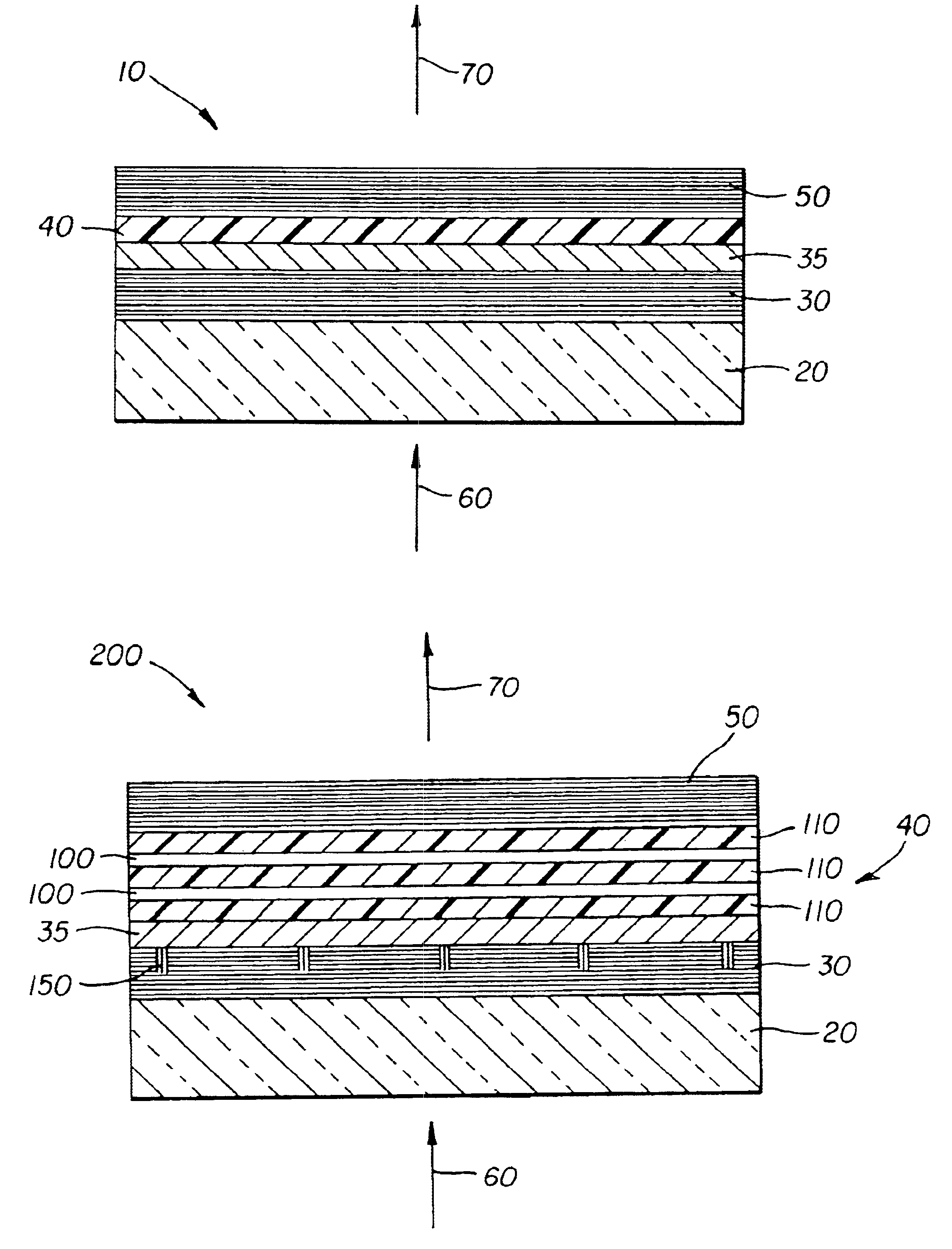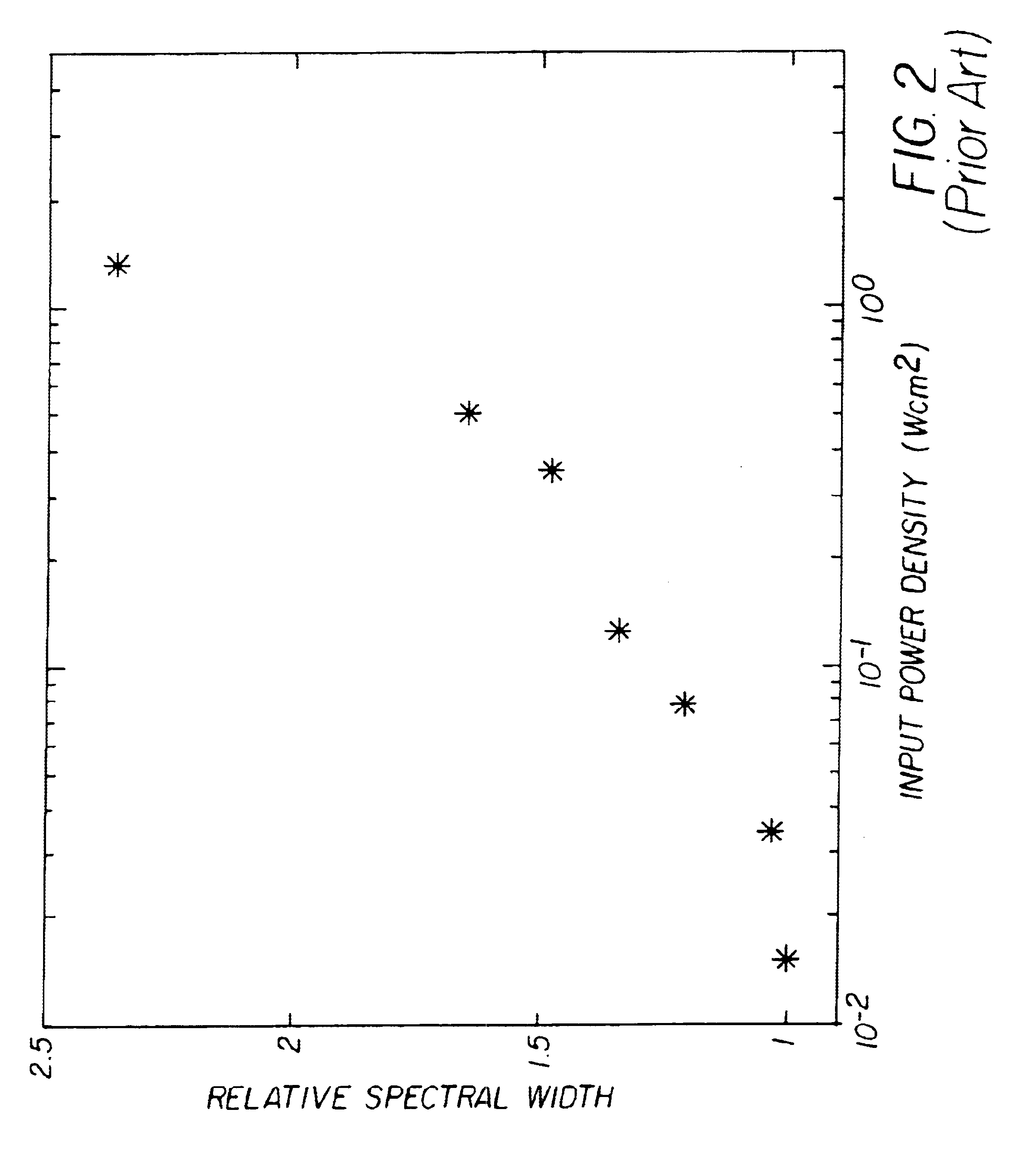Organic laser having improved linearity
a laser and organic technology, applied in the field of organic lasers, can solve the problems of non-linear variation of laser light output, device with low carrier mobilities, undesirable properties,
- Summary
- Abstract
- Description
- Claims
- Application Information
AI Technical Summary
Benefits of technology
Problems solved by technology
Method used
Image
Examples
example 1
In order to determine the impact on the lasing characteristics of placing a thermally conductive layer adjacent to the organic active region 40, a laser device 10 was fabricated where the top dielectric stack 50 was replaced by a Ag mirror. The laser structure was deposited on a pre-cleaned 6-inch quartz substrate 20. Over the substrate 20 was deposited by conventional electron-beam deposition at 240° C. the bottom dielectric stack 30, which was composed of alternating high and low refractive index layers of TiO2 and SiO2, respectively. The resulting dielectric mirror had a measured peak reflectance of ˜99.3% at 560 nm. On top of the bottom dielectric stack 30 was deposited, by high vacuum thermal evaporation, the organic active region 40, where in order was grown 149 nm of TAPC, 30 nm of Alq with 0.5% C545T, and 207 nm of TAPC. Lastly, a 200 nm thick Ag metal mirror was deposited by high vacuum thermal evaporation.
Since the top dielectric stack 50 was replaced by a Ag mirror, both ...
PUM
 Login to View More
Login to View More Abstract
Description
Claims
Application Information
 Login to View More
Login to View More - R&D
- Intellectual Property
- Life Sciences
- Materials
- Tech Scout
- Unparalleled Data Quality
- Higher Quality Content
- 60% Fewer Hallucinations
Browse by: Latest US Patents, China's latest patents, Technical Efficacy Thesaurus, Application Domain, Technology Topic, Popular Technical Reports.
© 2025 PatSnap. All rights reserved.Legal|Privacy policy|Modern Slavery Act Transparency Statement|Sitemap|About US| Contact US: help@patsnap.com



